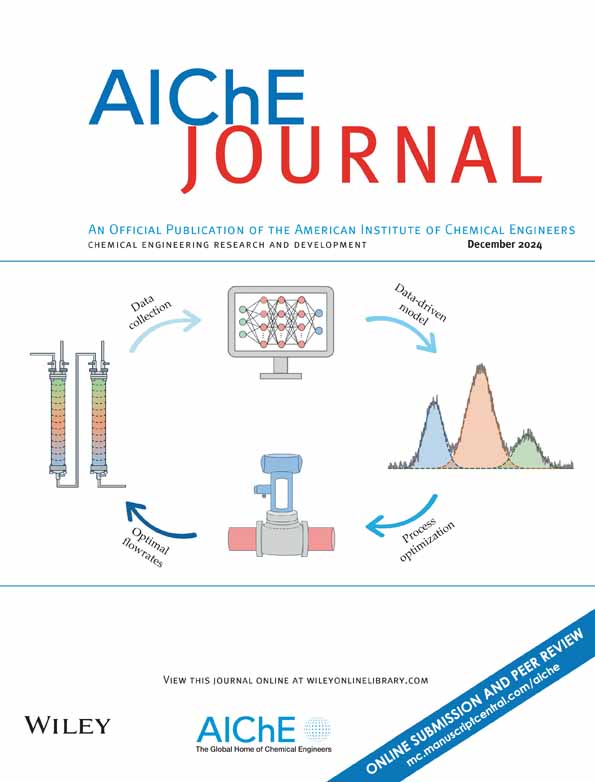动态位点间转化减少了甲醇-烯烃转化的诱导期
IF 3.5
3区 工程技术
Q2 ENGINEERING, CHEMICAL
引用次数: 0
摘要
采用颗粒分解瞬态微动力学模型,研究了催化剂孔、颗粒、颗粒和反应器床上的反应-扩散耦合,该模型分别应用于ZSM - 5催化剂上的温度程序化解吸和甲醇和二甲醚转化的阶跃响应研究。提供了跨尺度解吸的演化。研究了五个模型(覆盖、异常扩散、传质、固定位点-相互转换和动态位点-相互转换),以描述第一步反应周期中44分钟的诱导期和随后的步骤反应周期中95%的减少。还原是由于动态的自催化相互转化跨越三个活性位点系。第一个活性位点-系综保留了第一步反应周期的动力学功能,而第二个和第三个活性位点-系综采用了由表面甲氧基物质和吸附水介导的新的动力学功能。动态位-互转化机制缩短了诱导期,提高了反应效率,描述了伯烯烃的形成。本文章由计算机程序翻译,如有差异,请以英文原文为准。
Dynamic site‐interconversion reduces the induction period of methanol‐to‐olefin conversion
Reaction–diffusion coupling across the catalyst pore, grain, pellet, and reactor bed has been studied using a particle‐resolved transient microkinetic model applied to temperature‐programmed desorption and step‐response studies of methanol and dimethyl ether conversion over ZSM‐5 catalysts, respectively. An evolution of desorption across scales is provided. Five models (coverage, anomalous diffusion, mass transfer, fixed site‐interconversion, and dynamic site‐interconversion) are investigated to describe the 44‐min induction period in the first step‐response cycle and the 95% reduction in subsequent step‐response cycles. The reduction is due to dynamic autocatalytic interconversion across three active site‐ensembles. The first active site‐ensemble retains the kinetic function of the first step response cycle while the second and third active site‐ensembles adopt a new kinetic function mediated by surface methoxy species and adsorbed water. The dynamic site‐interconversion mechanism reduces the induction period, increases the reaction efficiency, and describes the formation of primary olefins.
求助全文
通过发布文献求助,成功后即可免费获取论文全文。
去求助
来源期刊

AIChE Journal
工程技术-工程:化工
CiteScore
7.10
自引率
10.80%
发文量
411
审稿时长
3.6 months
期刊介绍:
The AIChE Journal is the premier research monthly in chemical engineering and related fields. This peer-reviewed and broad-based journal reports on the most important and latest technological advances in core areas of chemical engineering as well as in other relevant engineering disciplines. To keep abreast with the progressive outlook of the profession, the Journal has been expanding the scope of its editorial contents to include such fast developing areas as biotechnology, electrochemical engineering, and environmental engineering.
The AIChE Journal is indeed the global communications vehicle for the world-renowned researchers to exchange top-notch research findings with one another. Subscribing to the AIChE Journal is like having immediate access to nine topical journals in the field.
Articles are categorized according to the following topical areas:
Biomolecular Engineering, Bioengineering, Biochemicals, Biofuels, and Food
Inorganic Materials: Synthesis and Processing
Particle Technology and Fluidization
Process Systems Engineering
Reaction Engineering, Kinetics and Catalysis
Separations: Materials, Devices and Processes
Soft Materials: Synthesis, Processing and Products
Thermodynamics and Molecular-Scale Phenomena
Transport Phenomena and Fluid Mechanics.
 求助内容:
求助内容: 应助结果提醒方式:
应助结果提醒方式:


